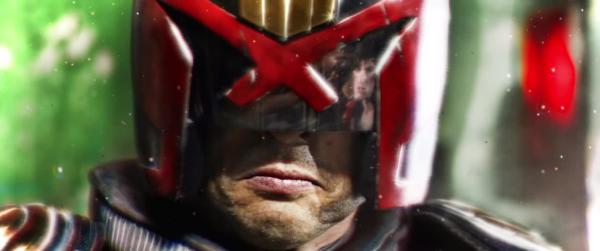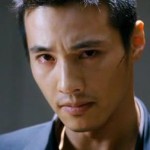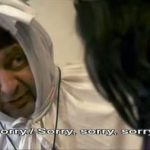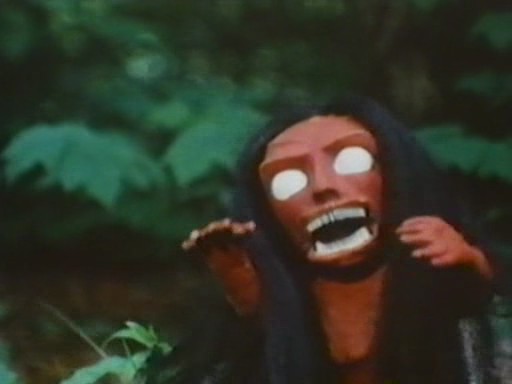Dredd

2012![]()
Written by Alex Garland
Based on characters created by John Wagner and Carlos Ezquerra
Directed by Pete Travis

If I hadn’t seen Eega, Dredd would be my favorite flick of 2012. Which not only surprised me, but surprised everyone who saw Dredd, from the small amount of people who saw it in theaters, to the increasingly loud amount of people just now discovering it on DVD. Dredd is awesome, a solid action vehicle that builds a believable world without drowning you in lots of back story.

It’s sad that I knew Dredd would fail at the box office before it was even released, the scars of Stallone’s Judge Dredd is still too fresh in the minds of the American public, a public that has zero knowledge of the comic inspiration. But Dredd is having a second life, bolstered by loud supporters and a shocked new audience that is keeping Dredd on the top of the rental and sales charts.

Dredd succeeds because of many reasons. By keeping the action largely confined to a single mega-block, it allows for saving on huge set costs and makes the action close and personal. The fighting becomes desperate as the characters are trapped. Dredd‘s score by Paul Leonard-Morgan is among my favorite scores, and is the first film album I’ve gotten in years. The operatic Slo-Mo segments based on a slowed down Justin Bieber song contrast wonderfully with the heavy-synth action tracks.
The integration of bullet-time 3D via the drug Slo-Mo is a creative way to put Matrix action into a film and make it feel natural, the first time since the Matrix movies where the slow-motion feels like it belongs and isn’t shoehorned in because some producer wanted to ape the Wachowskis.

Olivia Thirlby’s Anderson is not your typical female action sidekick. Though in training, she’s an equal partner. Even though at some point she’s taken prisoner, she doesn’t just sit back and wait for Dredd to rescue her. She’s in control, she rescues herself, and she even saves Dredd. Anderson stays in power while going through the minds of awful people who think awful things, getting what she wants while not leaving any marks (well, not marks you can see.) It’s an equality seldom seen in today’s action epics, and painfully missed. Even Rakie Ayola’s Chief Judge seems natural, she has a respect for Dredd as the best street judge, but also firmly gives him orders.

|


The investigation of skinned and displayed murders gets the Judge’s attention. Anderson and Dredd bust a drug house on the floor the victims were from, and find Kay, who they believe is responsible. Taking him away for questioning, Ma-Ma realizes that Kay will talk and reveal that her entire drug manufacturing operation for Slo-Mo is at Peach Trees. The only resort is to seal Peach Trees away from the city via blast doors and order her gang to hunt down the judges. But they didn’t count on the judge being Judge Dredd. Soon the bodies of the gang members are piling high, Ma-Ma is desperately increasing the fire power used against the Judges, and the only result is collateral damage and the loss of her own men.
Like a video game, the players work their way up the Mega-Block to where Ma-Ma is holed up on floor 200. Surrender is not an option, nor is it acceptable as Ma-Ma’s gang has broken the law. This will only end when one side is dead.
Dredd somehow feels realistic despite being set in a ridiculous scenario. Peach Trees’ Mega-Block environment looks like an apartment complex in a bad neighborhood, with the decaying apartments, the graffiti everywhere (even in-jokes like “Kenny Who?”) wouldn’t seem out of place on many city streets. Businesses line the major walkways, signs advertising their shops and restaurants. The Mega-Block is old and worn, it looks beyond lived in to a sort of post-industrial habitat, a run-down slum.



Ma-Ma and her criminal gang are among the best representation of drug-addicts since Spun. The bad teeth, ratty clothing, and weird slouching as the characters attempt to act normal while either partially high or going through withdrawals highlights the despair of their surroundings, how some attempt to escape by drugs, anything to see beauty and feel good in an environment so dirty and hopeless. It’s exactly how you expect real drug addicts to look, not Hollywood versions where supermodels put on a slightly pale foundation and carefully comb their hair messy.
Even the background actors look real. They aren’t pretty, many are overweight, wearing clothes that look like they’re from bargain department stores, often fleeing confused and scared from whatever chaos is happening around them. People hide in their apartments praying things will be over and their families will be safe.
The world of Dredd and the Mega-City One is one that is collapsing under its own weight, becoming increasingly impossible to regulate. It’s impossibly huge and strife happens all over, the introduction showing riots and decay. Despite their fancy gadgets, the Judges can only respond to 6% of the crimes. Their desperation is what gives Anderson a chance, her unique gifts seen as an opportunity to help offset the tides. Her story is also the story of the city, it may be filled with corrupt criminals, but there are also good people who are surrounded by the mess.



Dredd‘s world is a world where Big Brother is constantly watching, even if it doesn’t have the resources to respond. Unmanned drones scour the sky and track criminals, visual recognition software identifies rioters, and the Megablocks are laced with cameras. Cameras that are turned against Dredd and Anderson when Ma-Ma’s gang takes control. The Judges are judge, jury, and executioner, a type of ultra-fascist cop arising to counter an increasingly lawless society. Granted, the society has a lot of fundamental problems. The world is a radioactive wasteland. The exceedingly high unemployment is mentioned in the film (96%), though the comics explain it as a side effect of cheap robot labor. Millions of unemployed people just standing around leads to long term problems. The massive amount of laws that would seem crazy (such as abolition of sugar) are thankfully not mentioned, and to keep things simple (and cheaper) deformed mutants and robots aren’t seen at all.
Judge Dredd doesn’t make the law, he enforces it. But he’s part of the system. Though sanitized a bit to make it more appealing to the audience and Dredd more sympathetic (such as Dredd stunning the kids that pull guns on him), Dredd is uncompromising in his pursuit of the law. He is loyal to that concept to a fault, a rock of security in a desperate world. And he never takes off his helmet.



Rated 10/10 (hot shot, 3 murder death kills, Mega-City One, computer eyes, vagrancy, copper wires, connected to the heart, taking over, wink to the audience, awful wig)
Please give feedback below!
Email us and tell us how much we suck!


















2 Comments
Todd
January 25, 2013 at 9:15 amI’m glad you mentioned right off the bat how this film doesn’t drown you in back story, because that’s one of the things I appreciated most about it. There’s no origin story, no visit to Judge Dredd’s boyhood home, no introduction of a character with a complicated relation ship to Judge Dredd’s past to inspire flashbacks. YAWN! Thank you, Dredd.
I also found myself wondering if Karl Urban’s mouth hurt at the end of the day from being locked in a perpetual grimace.
Tars Tarkas
January 25, 2013 at 12:26 pmYes, it’s great they don’t spend the first hour+ with Dredd being Bobby Dredd, teenage loser, who becomes Dredd after getting radioactive braces or something. Because I’m sure some executive thought that up between lines of coke.